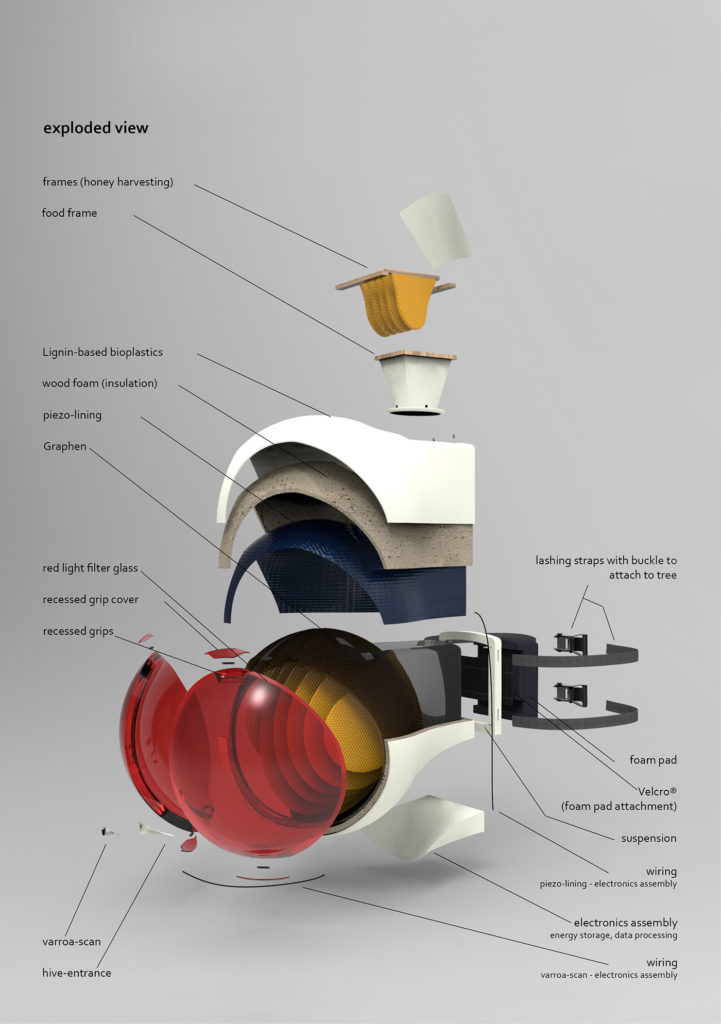2015

MAJA –
ENERGY-AUTONOMOUS URBAN BEE-HIVE TO COUNTER BEE-DEATH
Bee-death, also known as „ccd“ (colony collapse disorder), is a huge threat to our bio- and food-diversity, because of the bees being one of the mostly needed pollinators on earth. Many interacting factors are contributing to bee-death, one of them are Varroa- mites. To combat these, this future-oriented bee-hive houses a Varroa-Scan in its entrance.
Hanging Hive
The hive is conceived to be attached to trees in urban green areas, or to walls on rooftops. An aground standing hive would be antithetical to natural, hanging aloft, nesting holes, and risk underbody-coldness.
Image Enhancing
This concept shows deep interest in bee welfare and, additional to optimal control of varroa-infestation, the presently often outdated image of apiculture is brushed up and maybe even new apiarists can be recruited.
research + design concept
supervision:
Dipl.-Des. Christiane Bausback, N+P Design
Dipl.-Des. Susanne Hoffmann, academic associate
©️ All rights reserved.




focus on bee-health
This bee-hive is conducive to bee-health due to species-appropriate beekeeping: natural honeycombs, and by introducing only a few frames, not more than overproduced honey is harvested. Furthermore no division of brood nest is made.
DESIGN
The spheric shape of the main body was arosed from the form of natural honeycombs, brood nest and winter cluster, to which the bees get together in the cold months. It has an optimal relation between surface and volume, so no cold gaps occur and the risk of mould formation is lowered. The proportions are derived from Thomas Seeley’s research of preferred nesting holes of bees.


hive-entrance with integrated 360° varroa-scan
The Varroa-Scan operates energy-autonomously by the use of piezoelectricity: energy generation by sound waves made by bees‘ wingbeating and waggle dance, which serves them as a method of communication. All acquired data is analysed in an energy unit and uploaded into a cloud, through which a permanent access for the beekeeper via smartphone-app is guaranteed.
RED VIEWING PANELS
The glasses are red, because bees cannot perceive this colour, through which the hive innards are still appearing dark to them.
CONSTRUCTION
The proportions and the arrangement of the flight hole at the lower hive-end are derived from Thomas Seeley’s research of preferred nesting holes of bees.
FEED FRAME
The frames, serving for little honey harvesting, are placed in the back, because of bees building up their stocks hive entrance distal.
Equally the feed frame, which is needed in winter for slightly supplementary feeding. This is advisable even in ungarnered hives.
